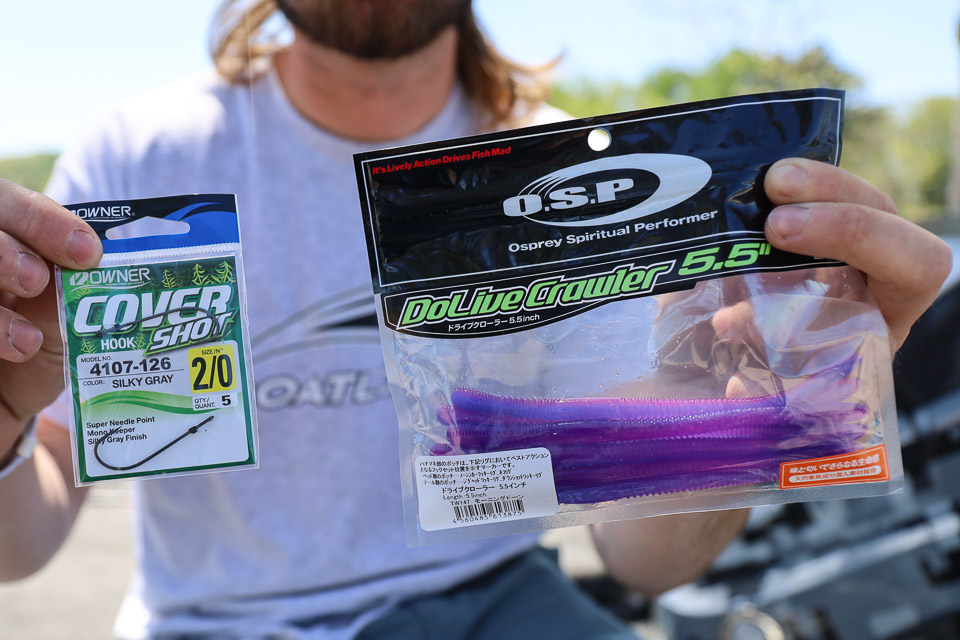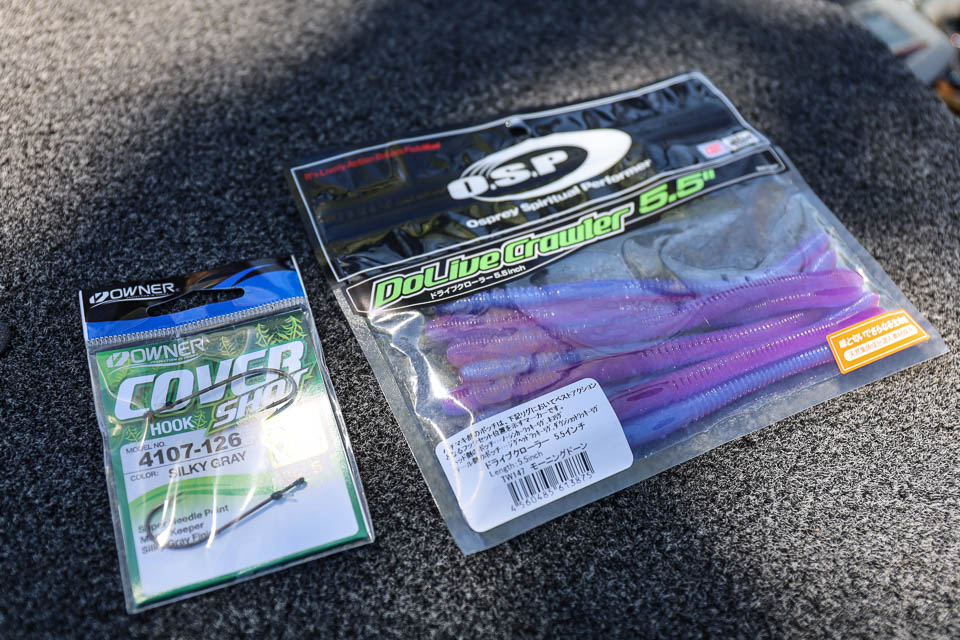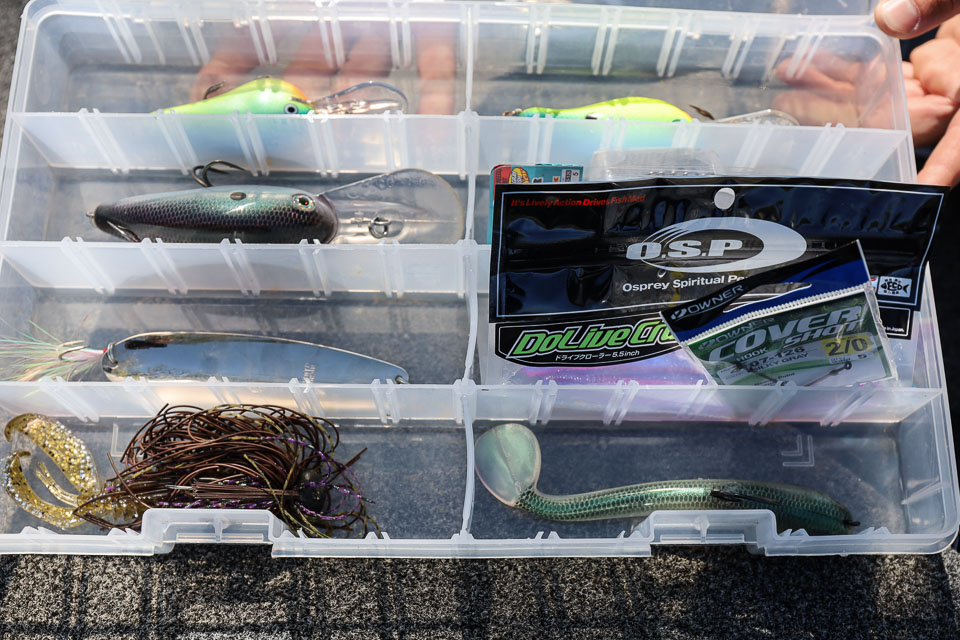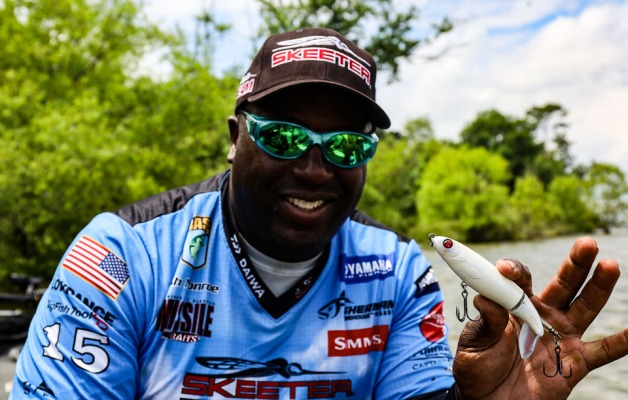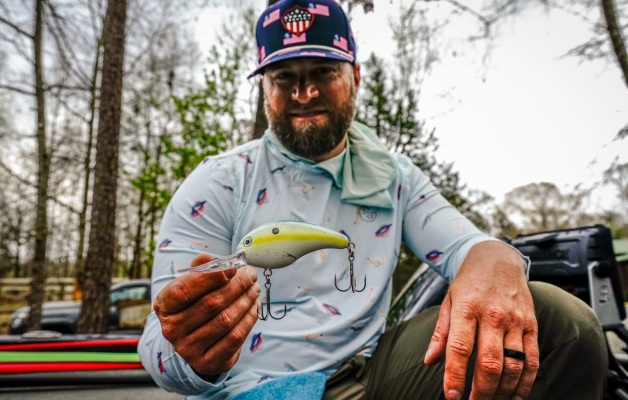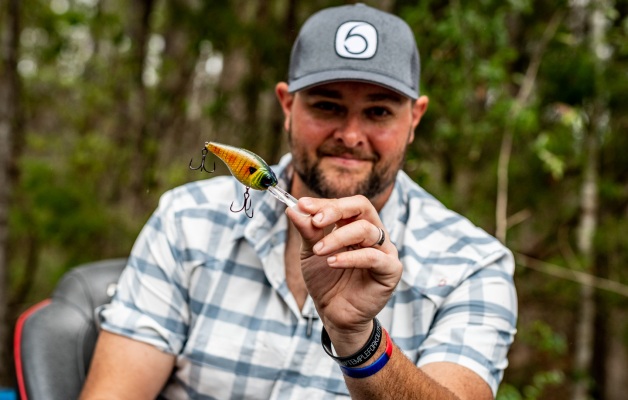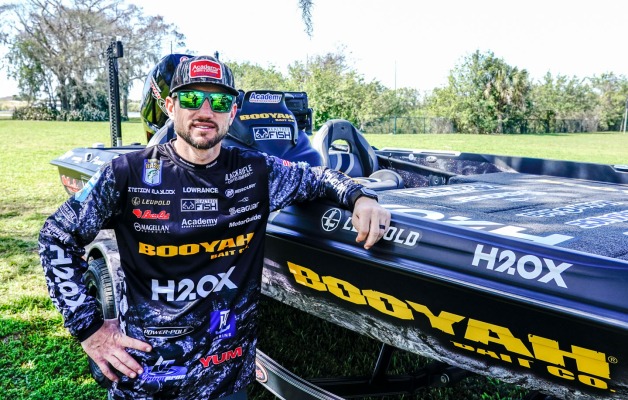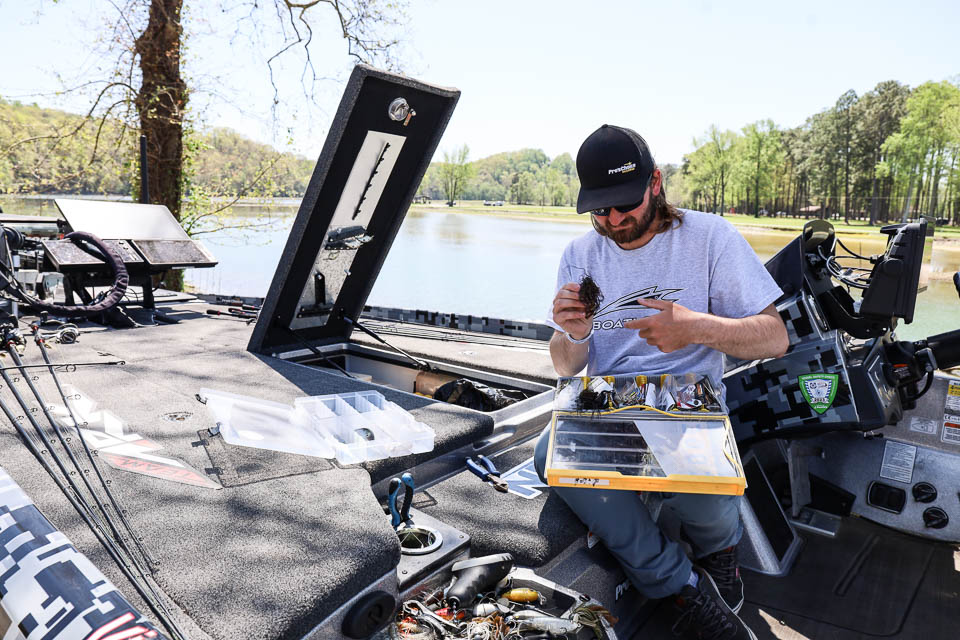
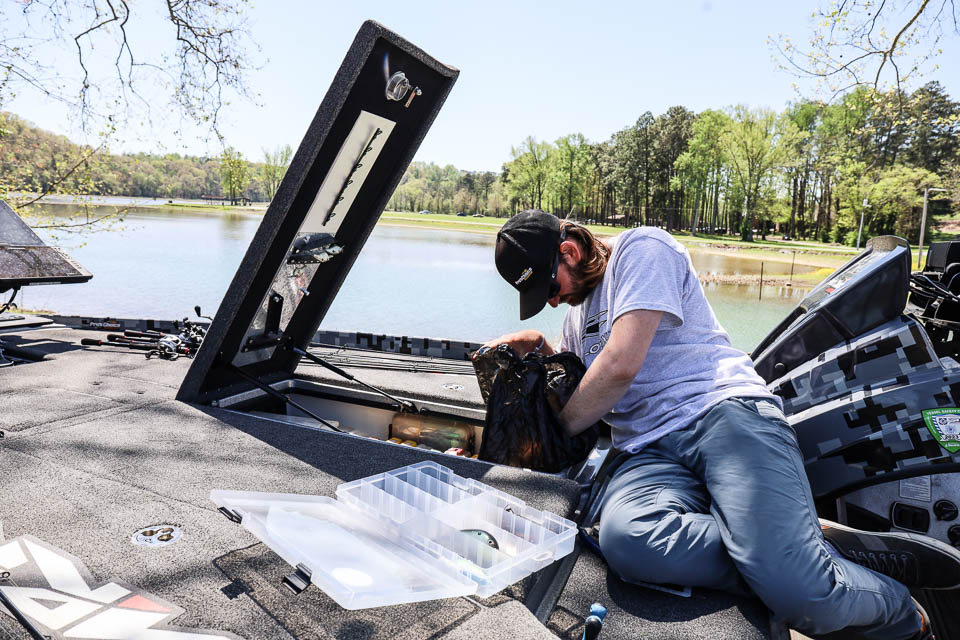
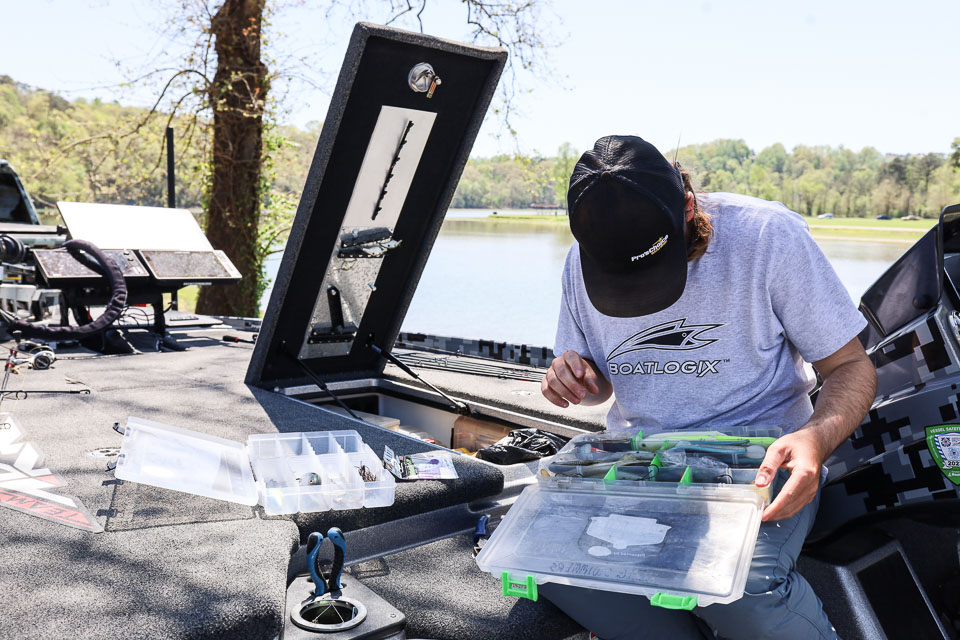
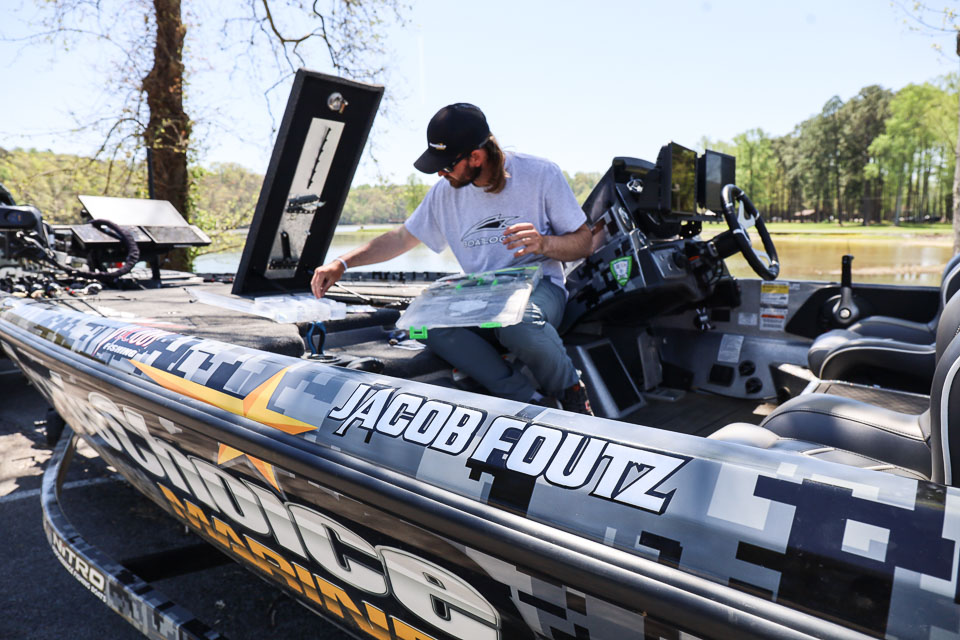
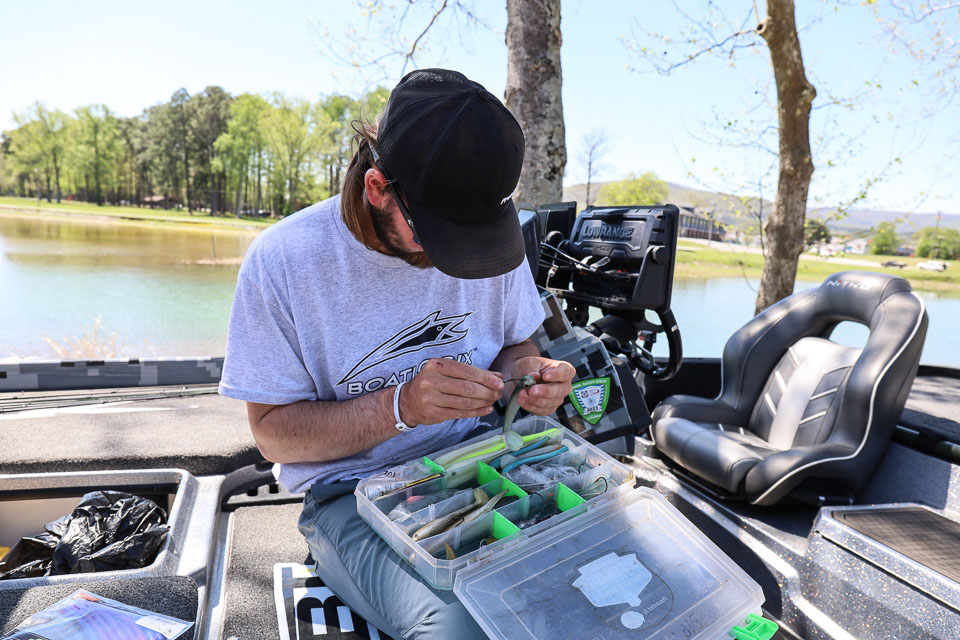
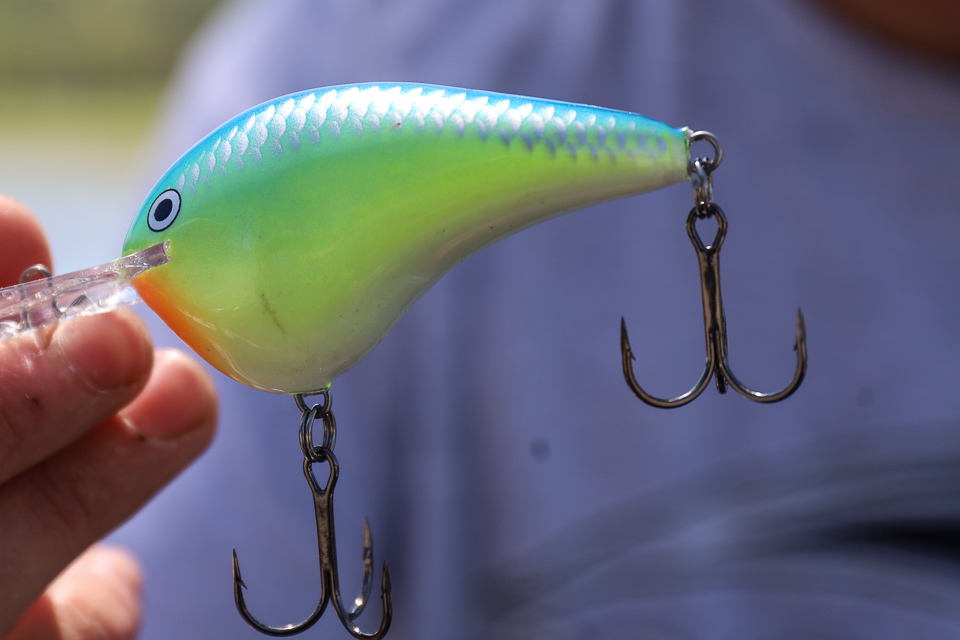
This is the first lure that Foutz will use to fire a school. “It’s a bigger profile crankbait that will attract the biggest bass in the school,” he said. “I like a silent bait like the DT Series, because I can get the bass to react quicker. It sneaks up on them and triggers their predator instinct for a reaction bite.”
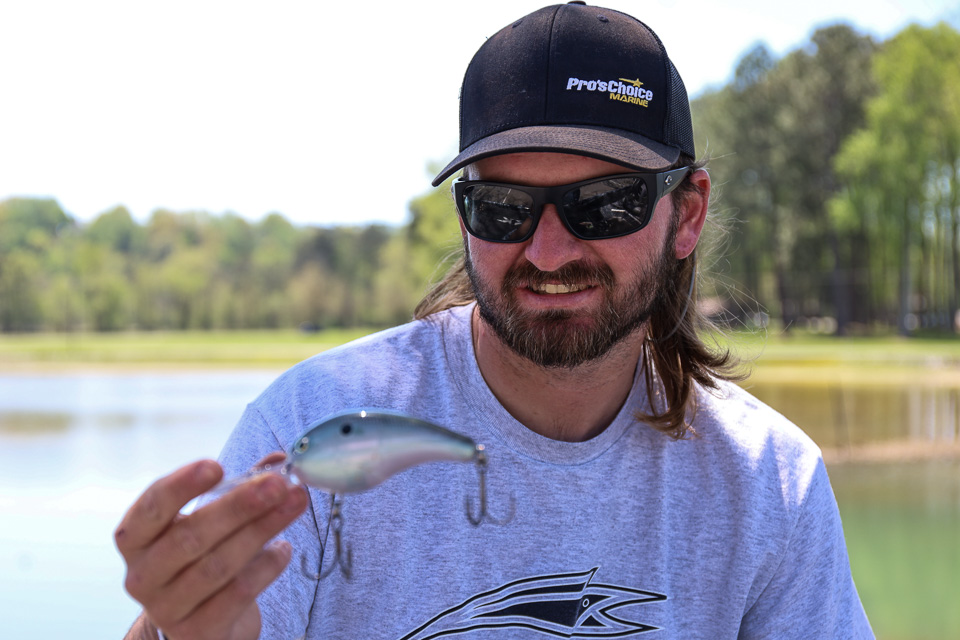
“If big largemouth make up the majority of the school, then I like to throw the 10XD for its bigger size,” Foutz said.
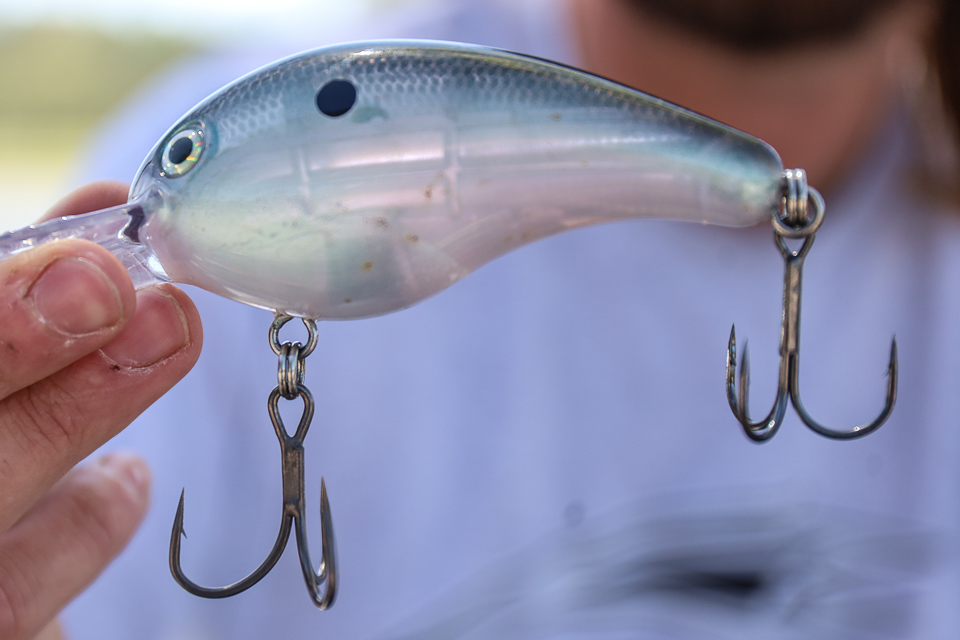
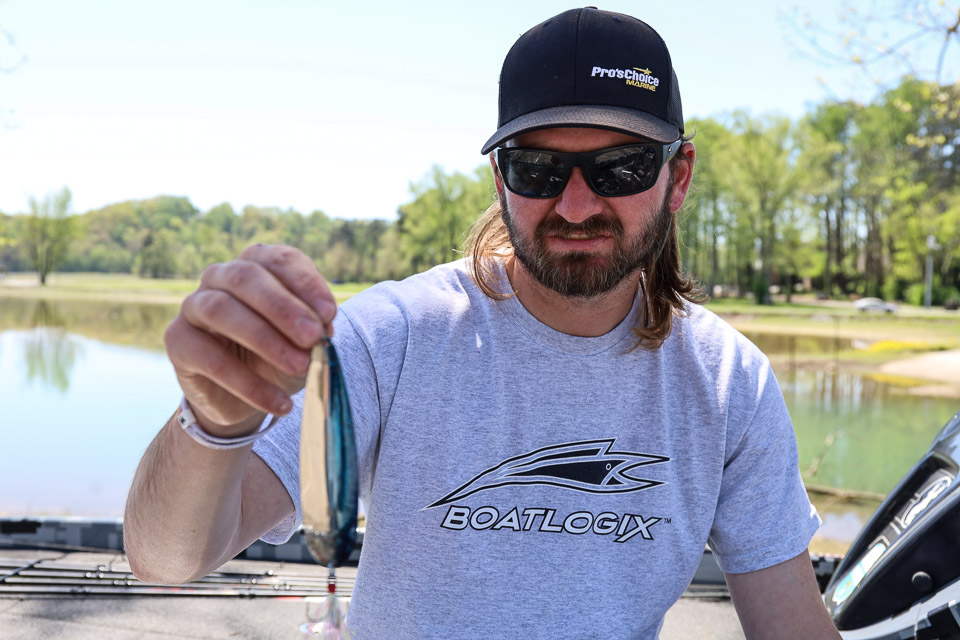
When the crankbait action cools, Foutz switches over to this big structure spoon in two scenarios. “You can usually tap into a few more big ones after the crankbait bite slows, and the other scenario is when you are on a school and the power generation stops.” It’s also another option for days without current at all, when the bass will suspend over the bottom.
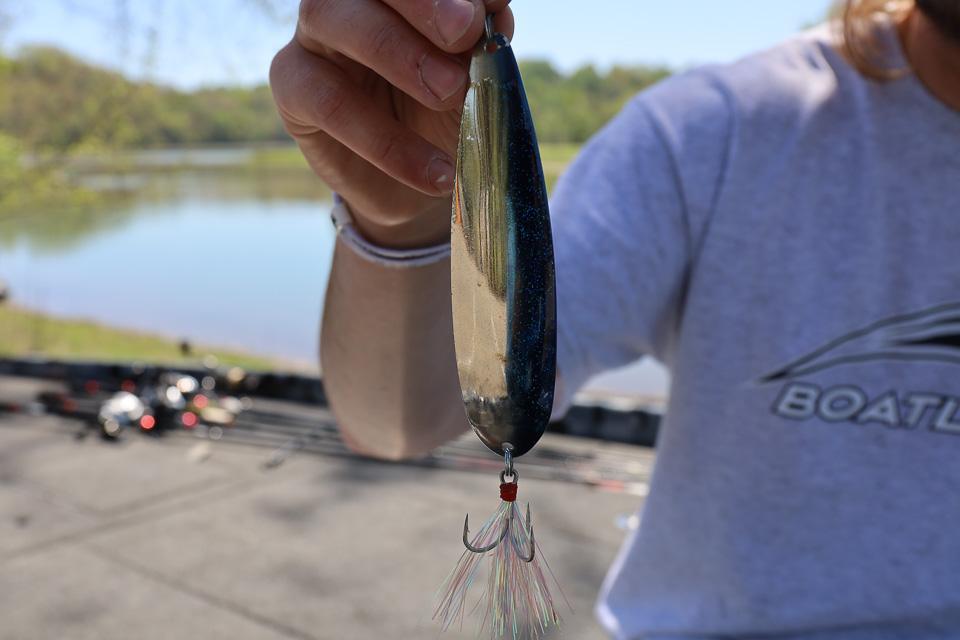
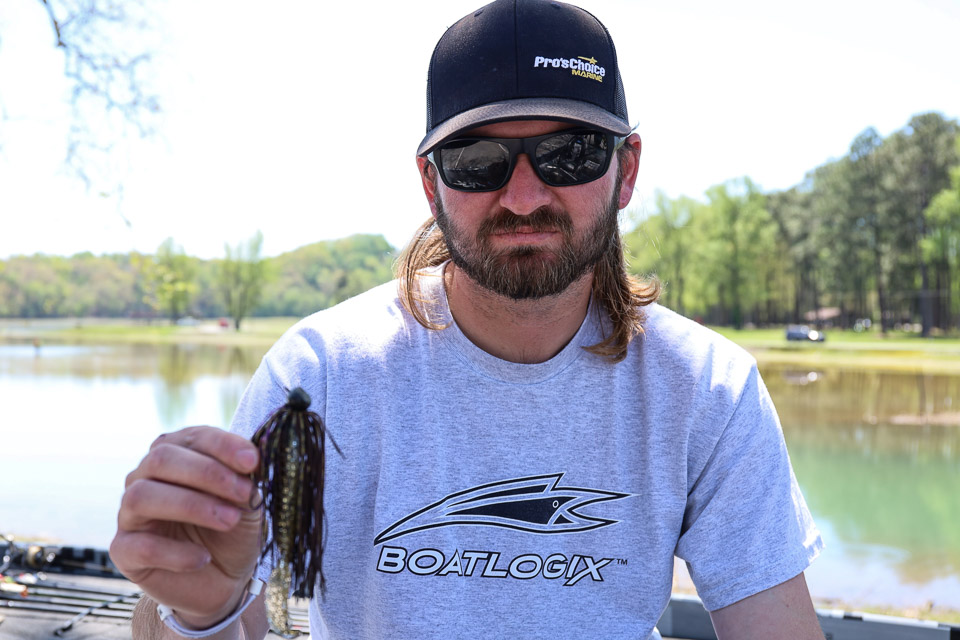
The third phase of the summertime ledge program is switching from the spoon to this football-head jig. “I call this my cleanup bait as the bite slows even more,” he said. “You might get fewer bites, but this will produce big ones, and I’m not in the business of catching small bass.”
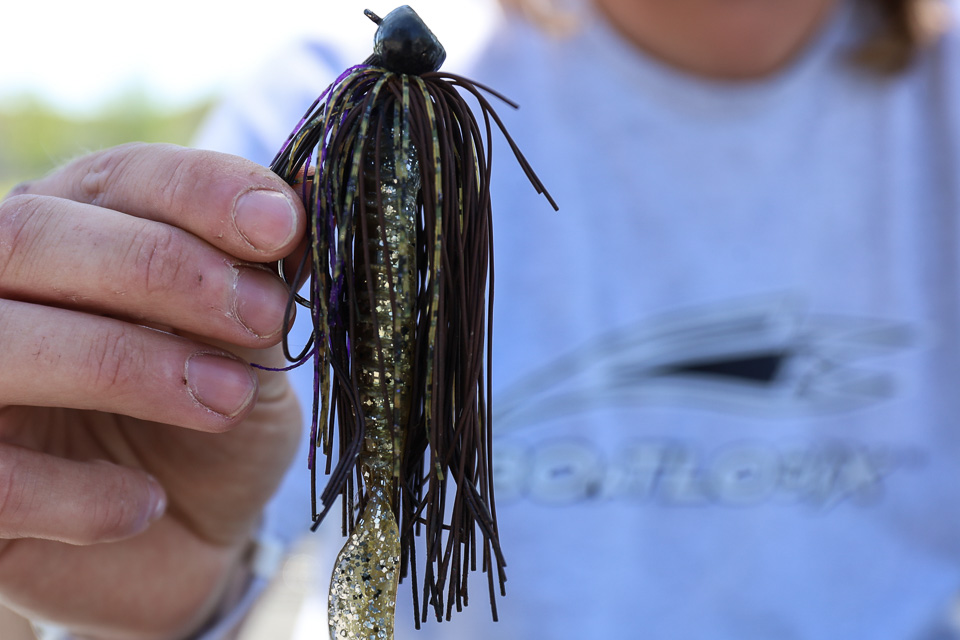
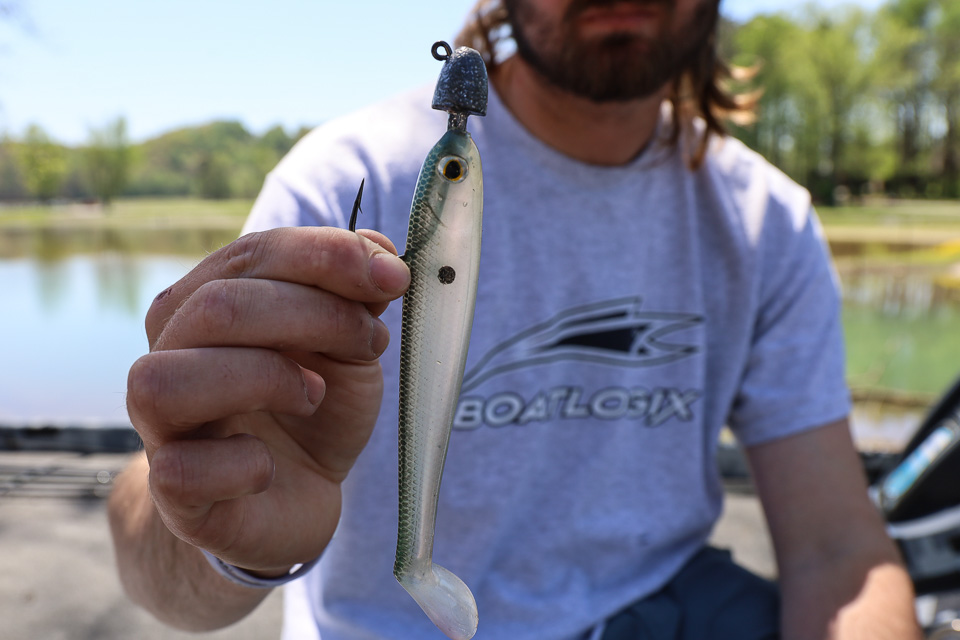
Foutz rigs this big swimbait on a 3/4- or 1-ounce Strike King Internal Swimbait Head to keep it on the bottom, depending on the current speed. “You can slow roll it off the bottom, fish it like a swim jig or give it a few quick retrieves and let it fall,” he said. “You can also keep it in that suspended strike zone when the bass are off the bottom.”
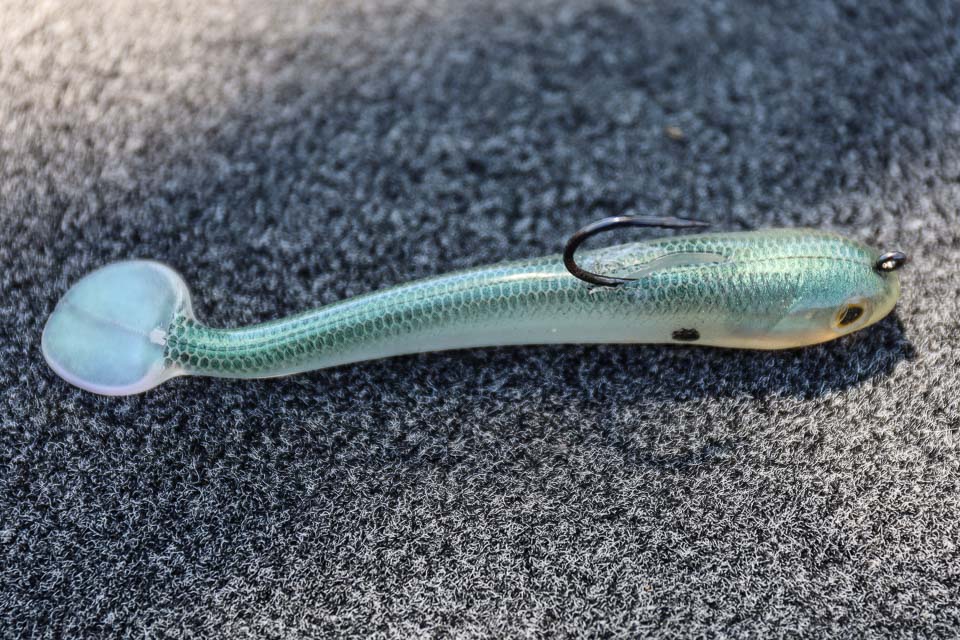
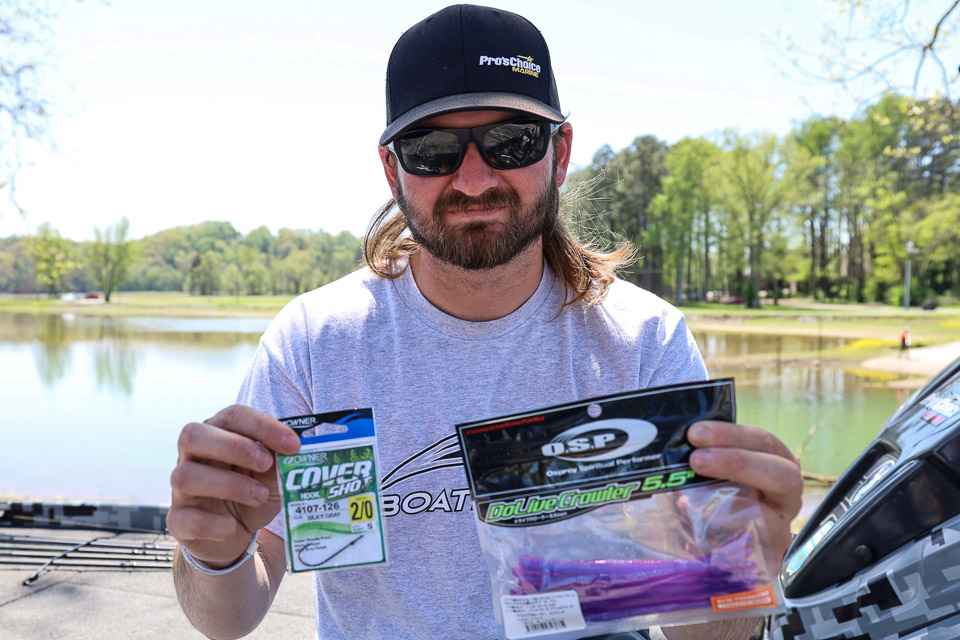
Foutz reaches into his secret compartment for this Japanese-inspired soft plastic finesse worm to fashion a drop shot.
